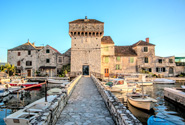
About Kastela
Our town is specific because of the fact that it developed around 7 settlements (Kaštel Štafilić, Kaštel Novi, Kaštel Stari, Kaštel Lukšić, Kaštel Kambelovac, Kaštel Gomilica and Kaštel Sućurac) or around castles. Each village has its own particularity merged into character of this part of Mediterranean...

Beaches
Divulje Beach is located in the westernmost part of Kastela and is situated several hundred meters below the Split airport. The beach is pebbly outside and sandy in the sea. Beach is popular among families with small children and the elderly because of a very gentle sea entrance. There is shower, rent a deck chair and beach bar...
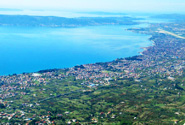
Walking & hiking
Kaštela, owing to its geographic location, can be both a seaside holiday spot and a great mountaineering destination, with a breath-taking view of Kaštela Bay. Kozjak is a mountain located above the town of Kaštela, stretching from Klis in the east to the pass of Malačka in the west...
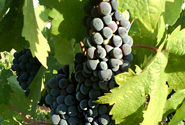
Legend of the wine
Crljenak kaštelanski is an old, almost forgotten, Croatian species of grape which recently captured interest of the wine-making public. The reason for that was discovery that Crljenak kaštelanski and an American species Zinfandel have the same genetic profile. It was established that the two species are the same...
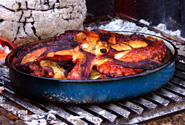
Kaštela – flavours of Dalmatian cuisine
The Dalmatian cuisine is a combination of Mediterranean cooking and the traditional customs of Dalmatian lifestyle. The traditional Dalmatian diet consists of regular intake of cereal, fruit, vegetables, beans and nuts, with plenty of olive oil, fish, red wine and dairy products...
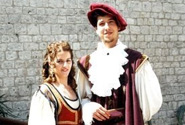
Romeo & Julia from Kaštela
A legend from the second half of the 17th century tells of the tragic love of two young people from Kaštel Lukšić. A daughter, Dobrila, was born to the noble Vitturi family, and a son Miljenko to the Rušinić family. The two later fell in love, but their relationship was forbidden due to hostilities between their families...


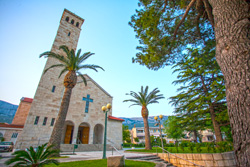 In Kaštel Sućurac stands the oldest defensive fortress built in 1392 by A. Gvaldo the archbishop of Split to protect peasants from the settlement Putalj which was situated on the slopes of Kozjak, near the little church of St. Juraj. Additional building formed a settlement by the sea.
In Kaštel Sućurac stands the oldest defensive fortress built in 1392 by A. Gvaldo the archbishop of Split to protect peasants from the settlement Putalj which was situated on the slopes of Kozjak, near the little church of St. Juraj. Additional building formed a settlement by the sea.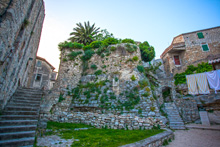 North of Kaštel Sućurac there is a church Gospe od Doca, today known as Gospe na Hladi. It was the parish church of a settlement called Sela. More to the north lie remains of a pre-Romanic church of St. Juraj od Putalja dating from 14th century which was a grant of duke Mislav with fragments of pleter decorations. The new church was built in 1927. Archeological surveys around the church and the nearby cemetery discovered a Roman and a pre-historic layer.
North of Kaštel Sućurac there is a church Gospe od Doca, today known as Gospe na Hladi. It was the parish church of a settlement called Sela. More to the north lie remains of a pre-Romanic church of St. Juraj od Putalja dating from 14th century which was a grant of duke Mislav with fragments of pleter decorations. The new church was built in 1927. Archeological surveys around the church and the nearby cemetery discovered a Roman and a pre-historic layer.